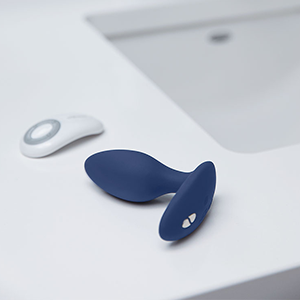
CONDOMS
A condom is a barrier device most commonly used during sexual intercourse to reduce the probability of pregnancy and spreading sexually transmitted diseases (STDs—such as gonorrhea, syphilis, and HIV). It is put on a man's erect penis and physically blocks ejaculated semen from entering the body of a sexual partner. Because condoms are waterproof, elastic, and durable, they are also used in a variety of secondary applications. These include collection of semen for use in infertility treatment as well as non-sexual uses such as creating waterproof microphones and protecting rifle barrels from clogging.
In the modern age, condoms are most often made from latex, but some are made from other materials such as polyurethane, polyisoprene, or lamb intestine. A female condom is also available, most often made of nitrile.
As a method of birth control, male condoms have the advantage of being inexpensive, easy to use, having few side effects, and of offering protection against sexually transmitted diseases. With proper knowledge and application technique—and use at every act of intercourse—women whose partners use male condoms experience a 2% per-year pregnancy rate with perfect use and a 15% per-year pregnancy rate with typical use.
Condoms have been used for at least 400 years. Since the 19th century, they have been one of the most popular methods of contraception in the world. While widely accepted in modern times, condoms have generated some controversy, primarily over what role they should play in sex education classes. They are considered unacceptable in almost all situations by certain religions, notably the Catholic church.
TYPES OF CONDOMS
Male and female condoms
A female condom (left) and a male condom (right)
There are two main types of condoms. What is generally called a condom is the 'male' condom, a sheath or covering which fits over a man's penis, and which is closed at one end.
There is also now a female condom, or vaginal sheath, which is used by a woman and fits inside the vagina. There is only one female condom approved by the U.S. Food and Drug Administration - the FC2 female condom, although a number of others are sold across the world.
This page discusses the male condom, but you can find out more about female condoms and how to use them in our female condoms page.

THE MALE CONDOM
The male condom is a sheath that is rolled over the penis to prevent semen from entering the vagina. Condoms are a barrier method of birth control made of latex, polyurethane or lambskin, to be disposed of after each use.
How does a male condom work?
Most male condoms have a small reservoir at the tip of the condom used to catch the sperm during ejaculation. The male condom reduces the likelihood that the vagina and cervix will come in direct contact with the penis or with secretions from the penis. Some condoms come with a spermicidal agent designed to kill the sperm.
According to the Mayo Clinic, 2 out of every 100 condoms break. Lubrications may be used to help prevent condoms from tearing, but not all lubricants are safe to use with latex condoms.
How effective is a male condom?
The typical use of male condoms, which is the average way most people use them, has a failure rate of 14-15%. This means that 14-15 people out of every 100 will become pregnant during the first year of use. Spermicidal agents increase the effectiveness to over 95% when used correctly and consistently. You should take a pregnancy test if you are experiencing any pregnancy symptoms.
What are the side effects or health risks of male condoms?
Male condoms do not have any side effects except to individuals who are allergic to latex.






1 comment
well i had a license,but buasece of my drinking problem i lost it,and then by the time i got sober the cost of getting it back was way thru the roof,between a couple states it would cost my at least 1500 bucks to get it back,AND thats just for my license ,never mind the cost of running and ,maintaining a vehicle of some sort.i would rather take that money and invest it in my bicycles and just keep pedaling along,i have done 2 rides ,a 400 miler ,then the next spring a 1340 miler ,had a blast both times.so i have learned that i truly can go anywhere i want,and for a guy that has mucular dystrophy and needs braces just to walk that to bad ,i cant walk worth a damm,please dont get me wrong,i can walk around,but a mile or so is really pushing it ,BUT i can RIDE that mile or so with no problem .EYE LOVE MY BIKES ,burn calories not carbon
Leave a comment